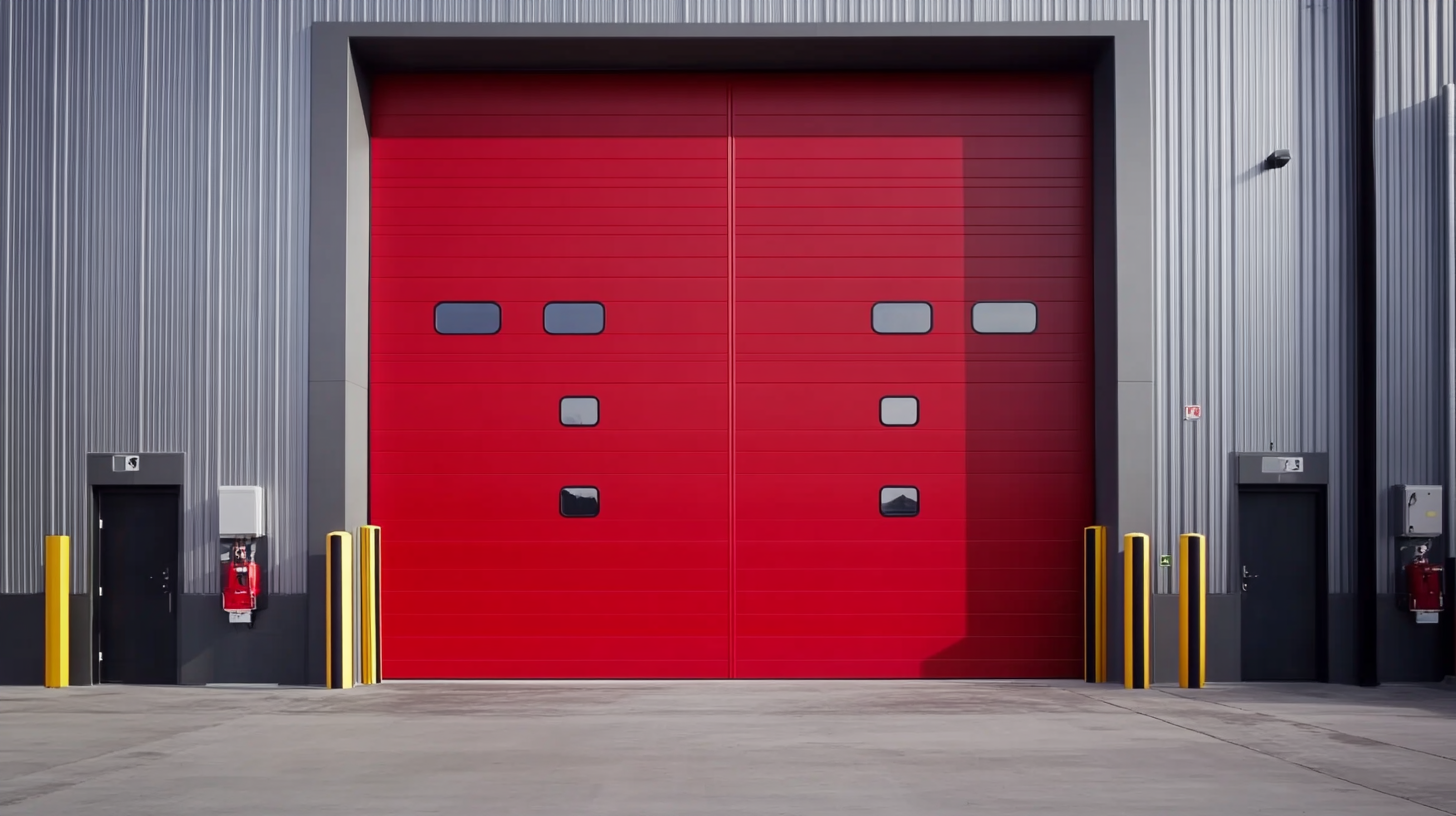Transform Your Business with High-Performance Fiberglass Doors: A Global Market Overview
In today's competitive business landscape, the choice of materials used in construction and design can significantly influence a company's image and performance. Among the plethora of options available, fiberglass doors have emerged as a game-changer. These high-performance doors not only enhance aesthetic appeal but also offer unmatched durability and insulation properties. As businesses strive to create welcoming environments that reflect their values, the adoption of fiberglass doors is becoming increasingly relevant.
This blog aims to provide a comprehensive global market overview of fiberglass doors, exploring their benefits, market trends, and the factors driving their popularity across various industries. By embracing fiberglass doors, companies can transform their operational efficiency and reinforce their commitment to sustainability. Join us as we delve into the transformative potential of fiberglass doors and how they can elevate your business to new heights.

High-Performance Fiberglass Doors: Key Characteristics and Advantages
High-performance fiberglass doors are revolutionizing the way businesses approach durability and energy efficiency. These doors are engineered to withstand harsh weather conditions, offering advantages such as superior insulation and resistance to moisture, making them ideal for commercial and industrial applications. According to the “Global Fiberglass Doors Market Report 2023,” the segment is projected to grow at a compound annual growth rate (CAGR) of 6.2% from 2023 to 2030, underscoring the increasing demand for high-performance building materials.
One of the key characteristics of fiberglass doors is their composite construction, which merges strength with lightweight attributes. Industry studies indicate that fiberglass doors can withstand impacts better than traditional wood or steel doors, resulting in lower maintenance costs over time. Additionally, these doors are available in various designs and finishes, allowing businesses to enhance their aesthetic appeal without sacrificing functionality.
Furthermore, high-performance fiberglass doors contribute significantly to energy efficiency. A 2022 report by the Department of Energy found that upgrading to fiberglass doors can reduce energy costs by up to 30% due to their superior thermal performance. This improvement aligns with global sustainability goals, making fiberglass doors an attractive option for businesses seeking to minimize their environmental footprint while achieving reliable security and durability.
Global Demand for Fiberglass Doors: Market Trends and Forecasts
The global demand for fiberglass doors is on an upward trajectory, driven by their unique benefits such as versatility, durability, and energy efficiency. According to market analysis, the fiberglass door segment is expected to contribute significantly to the overall doors market, which was valued at approximately USD 124.4 billion in 2021 and is projected to reach USD 206.6 billion by 2031, growing at a CAGR of 5.2% from 2022 onwards. This growth reflects an increasing awareness among consumers about the advantages of alternative materials over traditional wood and metal options.
In line with this trend, the aluminum door and window market is forecasted to reach $82.1 billion globally by 2031, expanding at a CAGR of 3.8%. This is indicative of a broader shift in the industry, where lightweight and resilient materials are becoming more favorable. The composite doors market also shows promise, with a comprehensive business report expected to shed light on emerging trends and opportunities.
As businesses increasingly seek to enhance aesthetic appeal and energy efficiency, fiberglass doors are poised to play a critical role in the architectural landscape. The patio doors market, valued at $38 billion in 2022, is projected to grow to $59.3 billion by 2032 at a CAGR of 4.6%, highlighting the substantial market potential for improved door solutions. Overall, the expansion across these categories signifies a robust future for fiberglass doors, underscoring their relevance in today’s competitive marketplace.
Impact of Energy Efficiency on High-Performance Fiberglass Door Adoption
The adoption of high-performance fiberglass doors is significantly influenced by the growing emphasis on energy efficiency in both residential and commercial sectors. According to a report by Grand View Research, the global energy-efficient door market is anticipated to reach USD 90.7 billion by 2025, growing at a CAGR of 7.5%. This surge is largely driven by increasing regulatory standards and consumer awareness regarding energy savings and sustainability.
High-performance fiberglass doors are engineered to meet these energy efficiency demands. Their superior insulation properties reduce thermal transfer, which can contribute to substantial savings on heating and cooling costs. The Department of Energy estimates that energy-efficient doors can save homeowners up to $200 annually in energy bills. Beyond cost savings, they also play a crucial role in reducing a building's overall carbon footprint, enhancing their desirability in a market that is progressively leaning towards sustainability.
Moreover, the technological advancements in manufacturing fiberglass doors have led to improved energy performance ratings. The National Fenestration Rating Council (NFRC) highlights that fiberglass doors can achieve U-factor ratings as low as 0.15, making them one of the top contenders for energy-efficient building materials. This combination of significant savings and performance benefits is driving the increased adoption of high-performance fiberglass doors across various sectors, positioning them as a key player in the green building movement.

Competitive Landscape: Leading Manufacturers in the Fiberglass Door Market
The fiberglass door market is witnessing significant advancements and an expanding competitive landscape. As the global demand for high-performance construction materials rises, leading manufacturers are strategically positioning themselves to capture market share. This evolving environment gives rise to innovative products that enhance the durability and aesthetic appeal of commercial and residential spaces. With an emphasis on sustainability, companies are now integrating eco-friendly practices into their manufacturing processes, thus meeting the growing consumer preference for environmentally responsible products.
In 2024, top manufacturers in the fiberglass door market are focusing on improving their product offerings by incorporating advanced technology and superior materials. The competition is not only about quality but also about enhancing customer service and engagement. Companies are embracing a holistic approach, investing in their workforce, optimizing supply chains, and expanding their research and development capabilities. This commitment ensures that they are well-equipped to respond to the dynamic shifts in consumer needs, particularly in emerging markets where construction activity is booming.
As the overall construction sector continues to evolve, manufacturers of fiberglass doors are expected to benefit from the projected growth in related industries. The synergy between innovative design and robust marketing strategies is crucial for success in this competitive landscape, allowing businesses to differentiate themselves and drive market growth effectively.
Sustainability in Construction: The Role of Fiberglass Doors in Eco-Friendly Building Solutions
The construction industry is increasingly recognizing the importance of sustainability, with fiberglass doors emerging as a key player in eco-friendly building solutions. Lightweight yet highly durable, fiberglass doors are designed to minimize environmental impact throughout their lifecycle. According to a report by Grand View Research, the global fiberglass door market is expected to grow significantly, anticipated to reach USD 1.2 billion by 2025, driven by escalating demand for sustainable construction materials.
Fiberglass doors are inherently energy-efficient, often featuring insulation properties that far exceed those of traditional wood or metal options. The U.S. Department of Energy highlights that energy-efficient doors can reduce heating and cooling costs by 10% to 15%. This not only benefits homeowners looking to lower utility bills but also contributes to reduced greenhouse gas emissions, aligning with global sustainability goals.
Moreover, the longevity and low maintenance requirements of fiberglass doors make them an economically favorable choice. They resist warping, cracking, and fading due to weather exposure, reducing the need for repairs and replacements. The U.S. Environmental Protection Agency emphasizes that materials with a longer lifecycle help to decrease waste in landfills, aligning with the principles of sustainable development. By integrating fiberglass doors into their projects, builders and homeowners alike are making strides toward more sustainable, environmentally-conscious construction practices.


